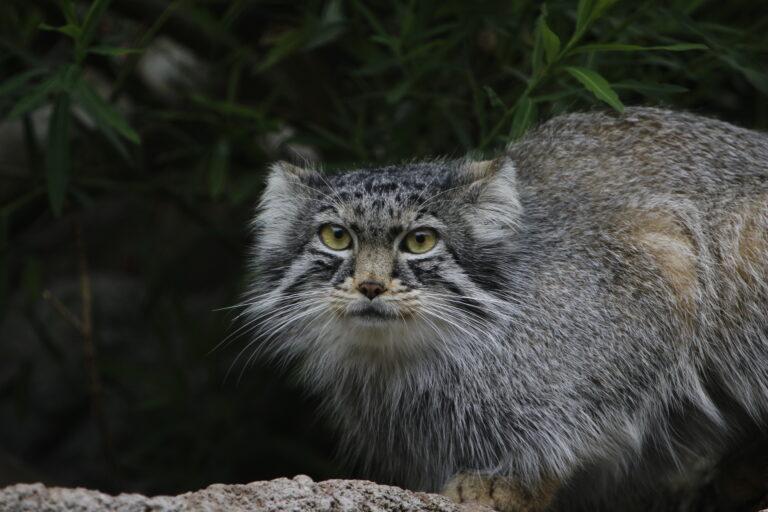

Caring for Pallas' Cat Petenka
Petenka is the second oldest Pallas' Cat in human care.
Caring for over 600 species at Utah’s Hogle Zoo is truly a team effort. Every day, our experts—veterinarians, educators, keepers, technicians, and other specialists—work hand in hand to ensure the health and wellbeing of resident animals. Our dedicated teams provide close monitoring and treatment when animals face health challenges.
Male Pallas’ cat, Petenka, needs such care. At 13 years old, Petenka is the second oldest Pallas’ cat in human care, surpassing the average 11-year lifespan in their natural habitat, categorizing him as a geriatric animal.
Recently, Petenka began experiencing seizures. After carefully evaluating his condition, our animal health and animal care teams started him on oral anti-seizure medication. Our veterinarians consulted with a board-certified neurologist and Petenka has responded well to the treatment. Our team continues to closely monitor him.
Petenka now has access to outdoor and indoor spaces, so you may not see him.
Petenka arrived at Hogle Zoo in 2015, following a breeding recommendation from the Pallas’ cat Species Survival Plan (SSP) to mate with female Pallas’ cat Hal (pronounced Haru). They had two litters between 2017 and 2018, each with five kittens, significantly impacting the SSP. The kittens have since moved to other facilities to continue their contribution to this vulnerable species. Hal passed away in 2023 from an inoperable tumor.
About Animal Wellbeing
Providing excellent animal wellbeing through animal health is a key priority for Hogle Zoo. Saving animals in the wild starts with the wellbeing of the animals under our care. Patenka is just one example of the individual personalized care we give each resident animal resident at the zoo.
About Pallas’ Cats
Pallas’ cats are found in the desert and mountain regions of the Himalayas, living at altitudes of more than 10,000 feet above sea level. Pallas’ cats are most active at dawn and dusk. Pallas cats den in small caves, cracks and abandoned burrows of marmots, foxes, and badgers. They are adapted for life in cold climates where temperatures may reach below 60 degrees fahrenheit. Their extremely thick and heavy coats and long, bushy tails help combat the cold.
Pallas’ Cat Conservation
Pallas’ cats are hunted for their pelts in parts of their natural range. Currently, one of the biggest threats to their survival is the poisoning of their main food source, pika. These small rabbit-like animals are considered pests and competitors with livestock grazing. Pallas’ cats are losing their prey sources as well as consuming the poisoned prey leading to a sharp decline in populations.



